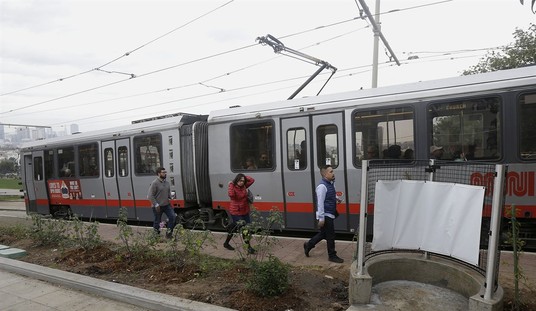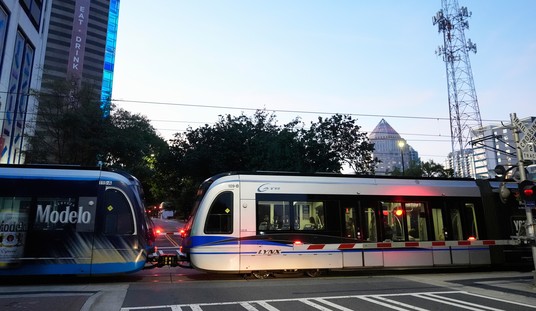Do you want the good news first, or the context? Eh, let’s go with the numbers first, because numbers are at least firm data. The US economy had its best week in the job market as measured by weekly initial jobless claims. In the week ending November 28, claims dropped by 75,000 to 712K, the lowest claims level since the pandemic shutdowns began in March.
Paid benefit claims dropped by another 569,000 too, another good number that probably requires more context than it did a couple of months ago:
In the week ending November 28, the advance figure for seasonally adjusted initial claims was 712,000, a decrease of 75,000 from the previous week’s revised level. The previous week’s level was revised up by 9,000 from 778,000 to 787,000. The 4-week moving average was 739,500, a decrease of 11,250 from the previous week’s revised average. The previous week’s average was revised up by 2,250 from 748,500 to 750,750.
The advance seasonally adjusted insured unemployment rate was 3.8 percent for the week ending November 21, a decrease of 0.4 percentage point from the previous week’s revised rate. The previous week’s rate was revised up by 0.1 from 4.1 to 4.2 percent. The advance number for seasonally adjusted insured unemployment during the week ending November 21 was 5,520,000, a decrease of 569,000 from the previous week’s revised level. The previous week’s level was revised up 18,000 from 6,071,000 to 6,089,000. The 4-week moving average was 6,194,250, a decrease of 425,500 from the previous week’s revised average. The previous week’s average was revised up by 4,500 from 6,615,250 to 6,619,750.
These numbers are good, but they are also incomplete. States only had three days to report numbers in the week ending on November 28, because Thanksgiving was on Thursday of that week. It is not unusual to see numbers drop in holiday weeks, thanks to reporting interruptions.
The drop in paid benefits requires a difference context. Up until the beginning of October, that may have been a fairly reliable sign of people returning to work. Now, however, it’s more likely a sign of state-provided benefits simply running out. With businesses entering a new set of restrictions on commerce, it’s almost a given that work opportunities will be drying up — a point we might keep in mind for tomorrow’s jobs report for November.
But now for a little positive context. Well, mostly positive context, to the extent that fraud and incompetence can be taken positively:
The claims data comes a day before the Labor Department releases its closely watched nonfarm payrolls report for November. Dow Jones estimates are for payroll growth of 440,000 and a decrease in the unemployment rate to 6.7%.
The report is also the first since the Government Accountability Office said the weekly jobless claims figures have been inaccurate during the pandemic. The watchdog agency cited uncounted case backlogs and fraud and other discrepancies at the state level as obstacles to providing an accurate count.
The GAO recommended that the Labor Department issue a disclaimer about the potential inaccuracy of the count, but none was included in this report.
The issues in reporting are much what they were at the beginning of the pandemic. The systems most states have in place for dealing with unemployment claims simply did not have the capacity for dealing with catastrophic displacement. That opened up opportunities for fraud, but the real issue is that reporting systems just couldn’t keep up. This was a well-known issue as early as May, but the GAO only recently clarified and quantified the problem. For the most part, states still haven’t fixed those problems, but we’ve been growing our way out of them. So far, anyway.
That might not continue for too long, though:
“The plunge in initial claims does not refute the idea that the trend is rising; we expected a sharp fall because of the difficulty of adjusting for Thanksgiving,” Ian Shepherdson, chief economist at Pantheon Macroeconomics, said in a note. “Initial claims likely will rebound strongly next week, probably rising above the 800K mark for the first time in eight weeks.”
We are likely still growing in the job market, but the momentum is slowing significantly and the new round of restrictions will only make that worse. Yesterday’s private-sector report from ADP projects the smallest jobs increase since the summer, coming in at 307,000 — well below the expectations reported by CNBC:

ADP isn’t the best predictive model in the world, but it’s usually at least somewhat close on broad trends.
The Wall Street Journal still sees brighter days ahead, if COVID-19 curves can be bent downward. They also see momentum slowing, though:
Other recent data, from the Commerce Department, suggest the economic recovery from the spring’s shutdowns has continued. Consumer spending and retail sales both rose in October, though at a slower pace compared with prior months. Sales of newly built homes in October remained near their highest level in more than a decade.
A Federal Reserve report Wednesday said the economy’s recovery picked up this fall, and the Institute for Supply Management said Tuesday that U.S. manufacturing activity grew in November for the seventh straight month, though that report showed employment in the sector declined last month. …
Through October, U.S. employers recovered 12.1 million of the 22 million jobs that were lost in March and April. The Labor Department will release November’s jobs report, its broadest accounting of the labor market, on Friday. Economists surveyed by The Wall Street Journal forecast employers added 440,000 jobs in November, a slowdown from the 638,000 jobs added in October. They expect the unemployment rate to decline to 6.7% from 6.9% in October.
“What we’re seeing overall is some stagnation in the labor market,” said Kathy Bostjancic, economist at Oxford Economics. “I think you’re seeing a marked cooling in demand for workers amid overall slowing in economic momentum.”
It’s this problem that lawmakers face in their negotiations over a new relief/stimulus package on Capitol Hill. With consumer disposable income drying up and state and local governments threatening more shutdowns, the country could be on the brink of a double-dip recession. The vaccines will eventually help with both health and economic recovery, but businesses can’t afford to float payrolls that long without enough income to fund it. Those businesses need to see resources locked in before they can start making decisions to keep people employed. The sooner Congress comes to a decision on Phase 4, the merrier their Christmas might be.








